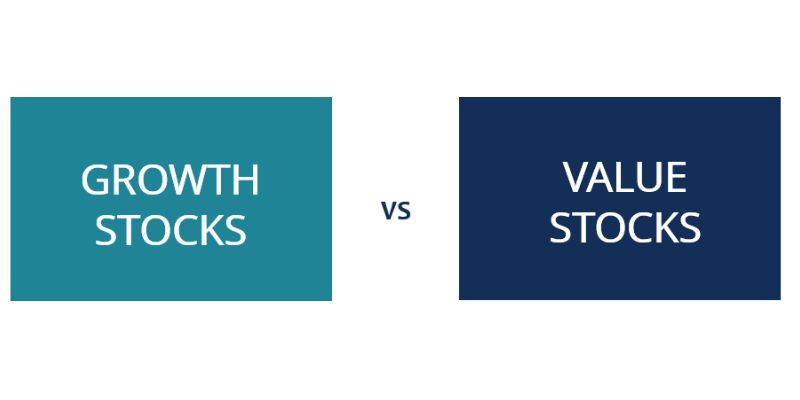Growth Stocks vs Value Stocks: Unveiling the Path to Wealth Mastery
You want to make smart stock picks. Great! But do you go for growth stocks vs value stocks? It’s like choosing between a high-speed jet or a sturdy ship. Growth stocks shoot for the stars, risky yet thrilling. Value stocks, solid and steady, may not dazzle but often deliver. In the ring of the stock market, knowing which fighter to back could tilt your fortunes. I’ve been there, and now I’ll show you how to spot the champs from the chumps. Let’s dive right into the heart of these investment styles and size them up. Ready to master your wealth? Keep reading, and let’s unlock the secrets together.
Understanding the Core Principles of Growth and Value Investing
Equity Investment Philosophies: Growth vs. Value
When we dive into the heart of investing, we find two main styles: growth and value. Now, I’ve spent a lot of time breaking down stocks. Let’s untangle these two big terms together.
First off, growth stocks. These are the young, high-flyers. They’ve got big ideas and even bigger growth rates. They don’t often pay out dividends. Why? Because they love to reinvest any cash they make back into the company, aiming for big future payoffs. Think of tech giants and startups; those are your prime examples.
Value stocks, on the other hand, are like the seasoned athletes of the market. These companies are well-established. They may not sprint like they used to, but they have a solid track record. They can reward investors with dividends because they generate consistent earnings. They sell for less than what they’re really worth – that’s where the name “value” comes in.
So, how do you spot them? Growth stocks often have high P/E ratios. They’re priced more than their current earnings justify, based on those rocket-high growth expectations. You’ll see their stock prices move a lot as their growth story unfolds – it can be quite a ride!
Now, value stocks. They’re the bargains of the stock world. Their P/E ratios are lower compared to their industry pals. They may not shine bright in the market spotlight, but they are sturdy. They hold up well in tough times, and that’s something to admire.
Identifying Key Characteristics of Growth and Value Stocks
Now, think of growth and value stocks as tools in your toolkit. You’ll pick the right tool based on the job you need to do, right? So, let’s match these tools to their tasks.
If you’re after quicker, bigger gains, and you can handle some ups and downs, growth stocks might be your game. These stocks grow fast, and their prices zoom up, giving you the chance for big wins.
But if you’re playing the long game, aiming for steady gains over time, value stocks are your teammates. They may not make headlines like growth stocks do, but they work hard and bring steady results.
Investors have their own ways to find these stocks. They study the market, look at the company numbers, and think about what the future holds. They’ll consider things like market cap, which is how much a company is worth in the stock world. And for high-growth ones, they’ll look at future earnings, thinking about what the company could make.
As for me? I take a close look at what the company does and how it stands in its industry. I want to know if it will grow and if so, how much and how fast. I also check out their financial health and if they can handle a storm.
Growth versus value – it’s not just about picking sides; it’s about knowing the lay of the land and making the right calls for your goals. They both have their place in the market, and smart investors know how to dance with both. Whether it’s a sunny bull market or a gloomy bear one, knowing these principles is like having a good map. It guides you, no matter where you’re headed in the world of stocks.

Analyzing Performance: Growth Stocks Versus Value Stocks
Historical Stock Performance Trends and Market Returns Comparison
When we look back, growth stocks often shine in fast markets. Big gains lure investors. In slow markets, though, value stocks take the lead. They’re like steady turtles, winning over time. Growth and value stocks behave like kids on a seesaw. One goes up, the other might go down. It’s a balance act—with risks and rewards.
Investing in stocks needs strategy. Think of it as planting seeds. Growth seeds can sprout quick but may face storms. Value seeds grow slower but can weather tough days. Knowing when to plant each seed is key. Historical trends help us. They show patterns, like how value stocks outdid growth ones in the early 2000s. But then growth stocks soared from 2010s, up high.
Why does this happen? Well, it’s a mix of things. People get excited about shiny new tech stocks. But sometimes, they pay too much for that sparkle. That’s when value stocks, the overlooked gems, can turn into treasures. Both sides have their shining moments. It depends on many things, like news, company earnings, and the big picture of the economy.
Impact of Economic Cycles and Future Earnings Projections on Stock Categories
Economic cycles play a big role in stock picks. During good times, growth stocks may zoom ahead. But when clouds come, value stocks offer a safe spot. They have firm roots in solid businesses. These stocks might not jump high, but they stand strong when winds blow.
Future earnings are like a map for where a stock might go. High-growth stocks promise exciting futures. People think they will keep earning more and more. These hopes can push stock prices up fast. But what if the hopes are too big? If reality doesn’t match, prices can tumble.
Value stocks tell a different tale. They may not grow fast, but they pay dividends. This gives investors a little thank-you for their trust over time. Also, value stocks often sell for less than they’re truly worth. So, picking these stocks can be like finding a dollar for 80 cents. It’s a bargain!
In the end, your style matters. Growth fits those who seek the thrill and can handle ups and downs. Value suits those who like a steady path and patience. Combining the two strategies could jazz up your portfolio even more.
Risk tolerance is about how much you can stand to lose before losing sleep. Get this right, and you’re on track. Whether you’re for growth, value, or both, know your heart in the game.
Understanding market strategies, investing in equities, and using the right stock valuation methods help a lot. With a good grip on equity investment philosophies, you’ll do better at identifying growth stocks and spotting the real value in value stocks. Growth vs value investing performance isn’t a race. It’s more like a dance, and each investor finds their own rhythm.
Stock market returns comparison is just one piece of the puzzle. Pair it with knowing the investor profiles for stock types and market capitalization relevance, and you’re getting warmer. It’s much like piecing together a big, bright picture from lots of little pieces. Each piece is important. They all count in making your investment picture whole and beautiful.

Assessing Investment Strategies: Matching Risk Tolerance with Stock Selection
Investor Profiles: Tailoring Strategies for Growth and Value Investments
What makes an investor pick growth or value stocks? Risk tolerance and goals guide this. Some love the rush of high-growth investment opportunities. They bet on stocks they think will soar. Others prefer long-term value investment. They seek stocks priced low but are solid picks.
Let’s dig deeper. Growth investors hunt for companies with rapid earnings gains. Think of tech firms that reinvent how we live. Their prices jump quick, but they can fall quick too. So, if you can handle ups and downs and aim for big rewards, growth stocks may excite you.
On the flip side, value investors look for deals. They love finding stocks that the market has missed. These gems have lower prices than they deserve. Their charm? They often pay dividends and can stand firm when markets get rough. If you nod to safe and steady gains, hang your hat here.
Understanding your own investor profile is key. It fits you with the right stock types. Smart, right? If you mix it up, it’s like wearing shoes that don’t fit. That’s no fun at all!
Dividend Yield Analysis and P/E Ratio Significance in Stock Valuation
When you hear “dividend yield,” think of it as your stock’s paycheck. A company pays you a part of its profit. The yield is how much you get compared to the stock price. High yields can mean a nice steady income. But, beware! Sometimes a high yield is a trap. It might mean the stock’s price has dropped because the company is in trouble.
Now, let’s talk about the P/E ratio. P/E stands for price-to-earnings. It’s how you size up a stock’s price against its earnings. A low P/E might shout “bargain!” But, it could also say the company has hit a rough patch. A high P/E often means investors think the stock will grow fast. Yet, it might also warn that the stock is too pricey.
This stuff can get tricky. But these clues help us avoid value traps and spot true steals. For growth stocks, a high P/E can be okay if the company’s future is bright. For value stocks, we want low P/Es and solid dividends.
Figuring out these numbers is part of smart investing. It helps tell if a stock will pad your wallet or if it’s just all talk. Investors use these tools to pick stocks that match their risk taste.
So, what’s the takeaway? Know your risk style, keep an eye on dividends, and use the P/E ratio wisely. Do this, and you will be better at picking stocks that fit you best. Plus, you’ll be ready for a bear or a bull dance in the stock market party.

Navigating Market Environments: From Bull Runs to Bear Markets
Portfolio Diversification Techniques and Market Capitalization Considerations
When you put money into stocks, think like a pro chef making a great meal. You need different ingredients. That’s diversification. It means mixing various types of stocks to lower risk. Like how you might add both spices and veggies to a pot. It’s not smart to just pick one kind.
Big companies have high market capitalization. Investing in these can be safer. But they may not grow as much as smaller ones. Small companies can be like seeds. They might turn into big trees, but they can also die early. The size of a company is key in choosing stocks.
Bear vs. Bull Market Strategies and the Role of Tech Stocks Investment Potential
Understanding bear and bull markets is like knowing the weather before a picnic. In bull markets, stocks go up like a rocket. It’s a great time for growth stocks. These stocks are from companies expected to outperform. They can shoot up fast in good times.
In a bear market, it’s different. Stocks drop like apples from a tree in fall. Value stocks might do better here. These are stocks that trade for less than they’re worth. They’re like hidden gems waiting to shine.
Tech stocks can be like fireworks. They have high potential to grow. But they can also explode and leave nothing. When picking tech stocks, look at their history and how much they could earn in the future. It helps you pick winners.
In this wild market ride, remember to keep calm. Walk the path of the wise. Mix different sized stocks in your investment pot. Watch the market weather closely. This way, you’re ready to grow your money in rain or shine.
In this post, we explored the foundations of growth and value investing. First, we uncovered the core concepts and the key traits that define each type of stock. We looked at the historical data to compare how growth and value stocks perform over time and in different markets.
Then, we matched investment strategies with your risk comfort. We laid out how to choose stocks that fit your profile, looking at dividends and P/E ratios. Lastly, we tackled how to play smart during bull and bear markets, with tips on diversifying your portfolio.
Investing is part art, part science. Whether you lean towards growth stocks, with their high potential, or value stocks, known for stability, it’s about finding the sweet spot that fits your goals. We’ve gone over how economic cycles affect stocks and how to evaluate them. Now, it’s your move. Use this guide to make informed choices and build a portfolio that stands the test of time. Here’s to making smart investment choices that pave the way to your financial growth!
Q&A :
What is the difference between growth stocks and value stocks?
Growth stocks are shares of companies that are expected to grow at an above-average rate compared to other companies in the market. These stocks typically do not pay dividends as the companies prefer to reinvest any earnings back into the business to fuel further growth. Value stocks, on the other hand, are shares of companies that are considered undervalued based on their trading price relative to their financial performance indicators such as earnings, dividends, sales, and cash flow. They often pay dividends and are characterized by having lower price-to-earnings ratios and higher dividend yields.
How do investors typically choose between growth stocks and value stocks?
Investors may choose between growth and value stocks based on their individual investment goals, risk tolerance, and market conditions. Those with a higher risk tolerance and seeking capital appreciation might lean towards growth stocks, which can offer higher returns but with greater volatility. In contrast, more conservative investors seeking stable income and less risk might prefer value stocks, which tend to be more stable and offer dividends. The choice also depends on the investor’s assessment of the market cycle; some may switch between growth and value investing based on prevailing economic trends.
Are growth stocks or value stocks better for long-term investment?
The better choice between growth stocks and value stocks for long-term investment depends on the investor’s objectives and market conditions. Historically, both categories have had periods of outperformance. Growth stocks can potentially deliver high returns if the companies continue to grow rapidly, but they can also be more volatile and vulnerable to market downturns. Value stocks can provide steady returns and tend to hold up better during market corrections, but they may not experience the same level of rapid appreciation. Diversifying between growth and value stocks can help balance the risks and benefits in a long-term investment portfolio.
Can growth stocks become value stocks and vice versa?
Yes, growth stocks can become value stocks and vice versa. This can occur as a company’s financial situation, market conditions, and investor perceptions change over time. For example, a growth stock might become a value stock if its growth slows down and it becomes undervalued by the market. Conversely, a value stock might experience a turnaround that reignites its growth, leading it to be reclassified as a growth stock. Market dynamics are fluid, and stocks can transition between categories as their narratives evolve.
What market conditions favor growth stocks over value stocks, and when is the reverse true?
Growth stocks tend to perform better in low-interest-rate environments when economic growth is strong, as investors are more willing to pay a premium for higher earnings growth prospects. Moreover, during periods of market optimism, investors may favor the potential for significant returns that growth stocks can offer.
Conversely, value stocks tend to outperform during periods of economic uncertainty or when interest rates are rising. In such conditions, investors may gravitate towards value stocks for their relative safety, lower valuations, and the income from dividends. Additionally, during market downturns, value stocks may offer more resilience due to their often more stable economic fundamentals.

